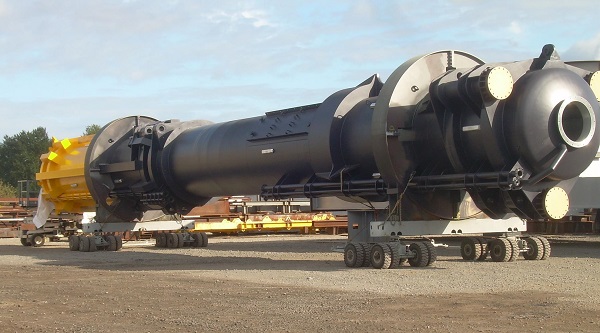Here’s our new nickname for Ocean Power Technologies’ PowerBuoy: Godot. As in, Waiting for Godot.
The first PowerBuoy — prelude to a federally licensed, 10-buoy, grid-connected power plant — was supposed to be in the water off the Oregon coast last summer. That plan slid to early fall. Then it became this spring. Now? It might not happen this year, the company said.

The latest setback was revealed in the company’s third-quarter report released earlier this month and noted first by the Oregon coast newspaper The World.
You might recall that the plan for the site off Reedsport, Ore., was to begin with a single PowerBuoy, not grid-attached. Assuming all went well in this testing, the company was then planning to install 10 grid-connected devices, totaling 1.5 megawatts of generating capacity.
According to OPT, in Feburary, staff from the Federal Energy Regulatory Commission informed the company that the deployment of the first PowerBuoy would be subject to all the requirements of the license granted last year.
“It was, is a surprise to us that the FERC staff considers this first buoy to be subject to their jurisdiction at the time that it’s not grid connected,” OPT CEO Chuck Dunleavy said in answer to a question during the company’s earnings report call earlier this month.
As a result, whether the PB150 is in the water this year is up in the air. Here’s what OPT said in that same earnings report call [PDF]:
OPT is at this time evaluating our response to the FERC staff’s representations. Deployment and commissioning of this first Oregon PowerBuoy must take into account the need for this further evaluation of the guidance from FERC, as well as the requirement for a significant use of funds for the deployment and operation of the system. As we have stated, we intend to seek additional funding for deployment of this PowerBuoy in view of costs associated with weather delays and regulatory factors. Again, this all may serve to delay deployment of our Oregon PowerBuoy beyond calendar 2013.
Dunleavy said the biggest cost could be in the time it would take to prepare reports that would be required to proceed. “It’s really a cost that’s measured in lost time,” he said. “It does include out-of-pocket cost, but the real cost is the opportunity cost.”
OPT, based in New Jersey, last year became the first company to be fully licensed to run a grid-connected wave power array in the U.S., at the Reedsport site. The company had hoped to have the initial PowerBuoy in the water in August last year, but a switch from a hydraulic power system to a mechanical one – considered less risky environmentally – slowed down the assembly and final testing of the PowerBuoy.
Then in late September, the company said weather-related delays in setting up the mooring system that will hold the PowerBuoy in place became factors as well. With the waters growing more rugged then, the installation was rescheduled for this spring.